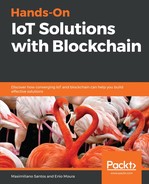Now, let's focus on the food tracking use case. Today, consumers are demanding more information and transparency on how and where their products are made. The EU requires more information about corporate supply chains, with huge penalties for companies and countries that do not comply. Since 2016, Chinese customers have been tracking where their food was produced, as well as how many times it has changed hands between different wholesalers and brokers before reaching their dinner tables. So, the use case sounds a good fit for blockchain, right?
Let's reflect on the five elements of blockchain:
- Business networking
Producers, manufactures, transportation companies, retail stores.
- Is there a transaction that needs validation or consensus?
Recording who owns what, when, and where an asset is in the supply chain.
- Are audit trails important?
Consumers request, blocks like E.U. and countries like China require a tracking audit.
- Immutability and 5. Finality
Different companies and assets involved in a complex process.
Okay, now that we know that blockchain fits with our use case, let's take a look at the benefits of using blockchain technology:
- It is verifiable, preventing any party from altering or challenging the legitimacy of the information being exchanged.
- Greater efficiencies are available through increased transparency in complex global supply chains.
- Regulators, authorities, and business network companies can quickly and easily request reliable information from across the supply chain.
In the next chapters, we will be exploring in more detail the food chain, and how blockchain with IoT can transform it.
